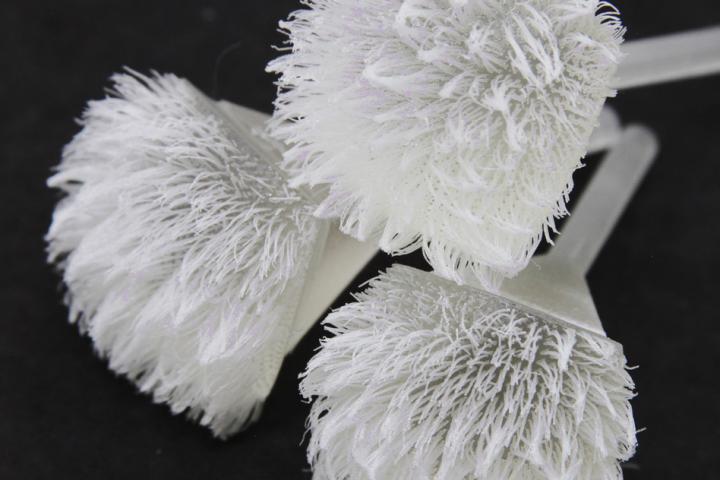
IMAGE: Paul Chiarot, an assistant professor of mechanical engineering at Binghamton University, recently received a five-year, $500,000 grant from the National Science Foundation's most prestigious program for early-career researchers, and he…
Credit: Jonathan Cohen, Binghamton University
BINGHAMTON, NY – Research conducted by a Binghamton University engineer might lead to a radical shift in manufacturing technology, one that could improve devices for energy production, healthcare and security.
Paul Chiarot, an assistant professor of mechanical engineering at Binghamton University, recently received a five-year, $500,000 grant from the National Science Foundation's most prestigious program for early-career researchers, and he aims to redefine 3D printing at a very fine scale.
His "electrospray" technique puts tiny particles into a solvent and applies them to a surface, creating electronics in a process not unlike an inkjet printer. "The normal way we make things is we put material everywhere and then etch away what we don't want," Chiarot says. "You might end up etching away 90 or even 95 percent of the material. If you're printing, you can just put the material where you want it to be."
Chiarot says his work will build on existing research strengths at Binghamton University. "What we're trying to do is to control, at the smallest length scales, what the structure of an individual layer looks like," he says. "Right now, there's not a lot of control for that. But if you want to be able to get really nice functionality out of a 3D printed part, you want to be able to control what we call structure at the smallest possible length scales."
That sort of control will enable engineers to produce parts with specific mechanical, electrical, thermal and optical properties, Chiarot notes. Magnetic particles lined up a certain way could be useful for data storage. A thin layer of gold can be both transparent and conductive, which can be useful in solar cell development. Glass particles could be useful for coatings with anti-fogging or anti-frosting properties, too.
"If you imagine these particles were billiard balls that we just threw together — which is the way we do it now — and you wanted to pass electric current through that, if it's randomly packed, it won't do a great job of it," Chiarot says. "But if we do it the way you line up billiard balls — in an orderly fashion — that should help us get better conductivity, a more efficient device or maybe one that requires less material."
The electrospray system relies on a high-voltage power supply and a small pump, which delivers the material to a nozzle that looks more like a syringe. When the particles come out in the spray, they have a high electric charge, which keeps them apart. It's like a cloud of solvent with the particles disbursed through it. Chiarot says secondary electric fields can be used to reposition them "in flight."
Flat plastic and glass substrates are the "workhorses" of his lab, but Chiarot is also interested in taking a plastic part from a 3D printer and using electrospray techniques to apply coatings onto objects that aren't so flat or so regular.
The goal is to make electrospray printing a true manufacturing tool. "We want to understand this principle fundamentally," Chiarot says, "and then, using that knowledge, we want to develop a manufacturing technique that can lead to new jobs."
He's excited about preparing his students for those jobs. Open-source technology for 3D printing has the potential to accelerate innovation, Chiarot says, and students need to be ready to take advantage of the possibilities.
He does anticipate manufacturing returning to the United States in a big way, though he cautions it won't look like it did 50 years ago: "We need things, both small and large, not just cell phones, but jet engines and replacement parts, too. Manufacturing positions will come back, but it won't be an assembly line."
###
Media Contact
John Brhel
[email protected]
607-777-3280
@binghamtonu
http://www.binghamton.edu
The post ‘Electrospray’ could revolutionize manufacturing; grant recipient to explore 3-D printing appeared first on Scienmag.




